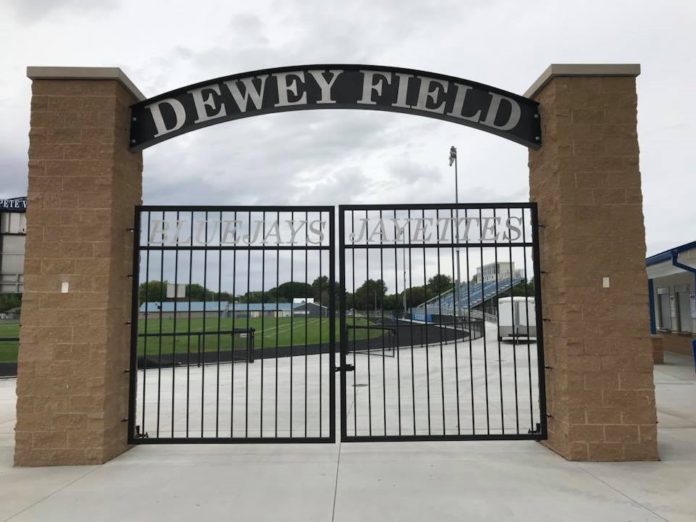Even a cursory look at high schools who regularly have success in athletics will invariably reveal a pipeline back to youth sports leagues in their communities.
There was serious concern at Perry in just the past school year that low participation numbers might threaten baseball as well as girls basketball, and the football team has been regularly plagued by a roster about the same size as those fielded by Panorama, Ogden, Woodward-Granger and other nearby schools who have student bodies well below half the size of Perry.
When the numbers are so low that the varsity struggles to field a team, the impact has dramatic ripples, none of them beneficial. Junior varsity opportunities disappear. Freshman teams vanish or rarely have a chance to compete fairly. The varsity is forced to field units that simply are not prepared to play at that level.
Forcing varsity teams to rely on underclassmen is not a winning recipe. While the effect in female sports is notable, it is far more pronounced in male sports, if for no other reason than the differing rates of physical maturity (speed, strength, durability).
Varsity coaches in most sports at Perry are forced to spend an inordinate amount of time working on fundamentals and basic skills, things that should have been learned at an earlier age. While the competition is working on improvement, Perry teams are often busy simply learning how to play the sport. By the high school years, that is too late.
Few would argue with the claim that the most successful varsity sports at Perry are the boys and girls soccer teams and the wrestling squad. It should come as no surprise that it is in those very sports that the youth leagues and clubs are packed with excited and eager youngsters.
Predictably, every school see some young players lose interest and stop participating by middle school, but the drop off between middle school and high school is one factor suffocating the varsity teams at Perry. Kids simply have to stay out, have to be convinced to stick with it. Parents must play a role in the decision.
These students look ahead and see programs that are struggling, or they are already playing on teams that are struggling, and they simply tire of defeat. This, of course, only feeds the cycle, starving the upper levels of experience, talent and — if nothing else — raw participation numbers.
The Perry football coaches have invested a lot of time and effort to build something resembling a youth foundation. The goal was to join the highly successful Metro league with four teams, in grades 3-6, but the effort appears to have come up short.
It looks as if Perry will field a combined 3-4 team, but no team for fifth or sixth grade. The other teams in the league do not have to resort to combining grades in order to form a team.
Adel recently had approximately 120 youth attend football camp, which was voluntary. Perry had roughly a quarter of that number.
Despite the entire student body receiving mailers and a campaign of in-school posters and discussions — and several media stories, including two on ThePerryNews.com — the response has been, in a word, pathetic. Considering that grades 3-6 must have a ball park figure of 240 or so young boys, only around 25 had signed up as of Aug. 1, weeks past the initial deadline.
The coaches, both in this case and in the other varsity sports, cannot be faulted for low numbers. No one wants to win more than they. In some Perry sports, the coaches have actually had to make visits to the homes of students to try and convince players (and this often needs parental consent and encouragement) to come out for a team. Unbelievable.
The youth baseball and softball leagues are nowhere near the size they were 10-15 years ago. The same can be said for other sports, soccer being the exception.
If the Perry community cares so little, then they have no reason to complain if, years down the road, the varsity programs struggle, as they are. Think the kids fail to notice crowds that include only a small portion of parents, a tiny selection of the student body and few others from the community? At basketball home games last season, the student section regularly numbered fewer than 40 if you do not count the pep band, which is required to be there.
The players can see the stands, can see when visiting teams bring a larger crowd to games than the Jays and Jayettes do, can count the sparse numbers on road dates. This is hardly encouraging — and at exactly the time when positive support and backing is most urgent.
The facilities are in place or are being improved. Financial backing is strong, as evidenced by the recent Dewey Field improvements and bond-issue voters approved.
It is not “throwing the baby out with the bath water” to address the issues facing the Perry prep teams. Indeed, it is probably long past due when the Perry community has a serious conversation both on what they expect and, critically, what it appears they are willing to settle for.
Tomorrow: The struggles will not quickly vanish, but they need not be permanent.


















I could be wrong, but probably some of the problem is the high number of Hispanic kids who prefer soccer to our traditional sports.